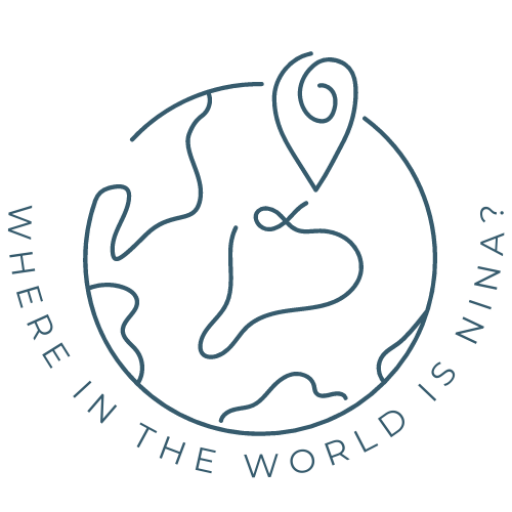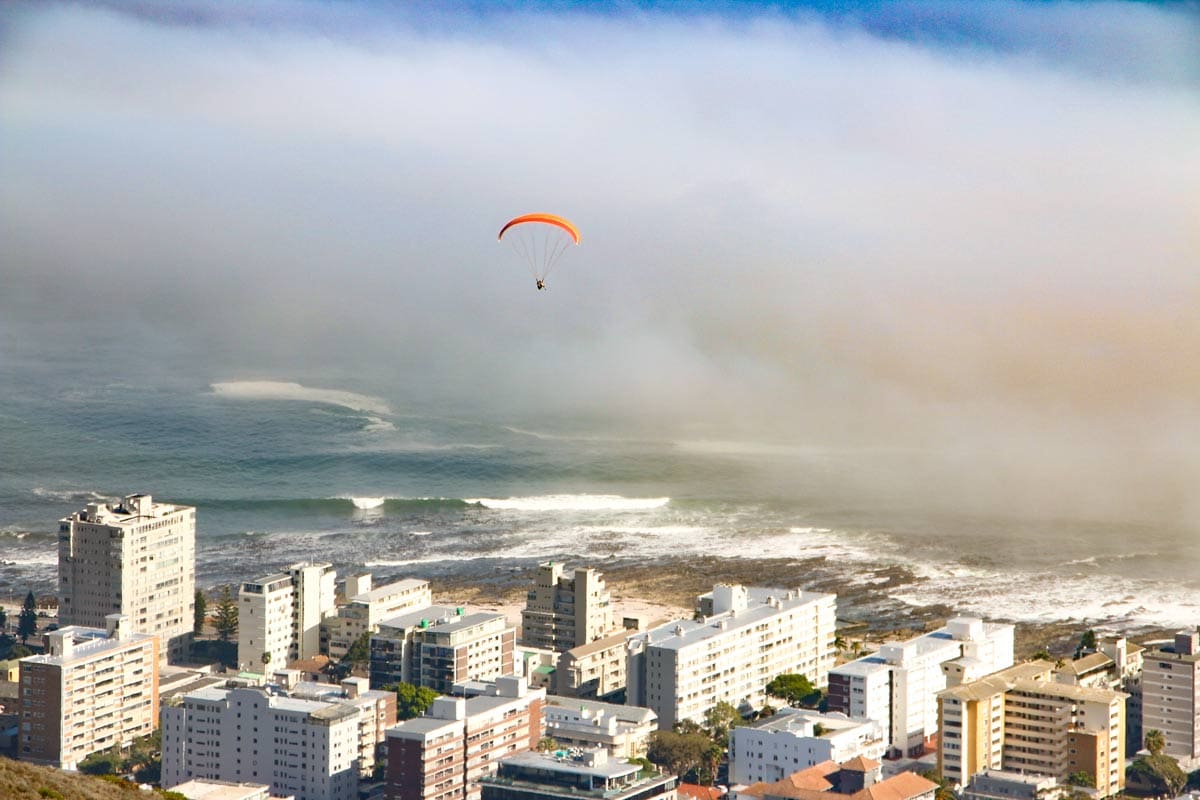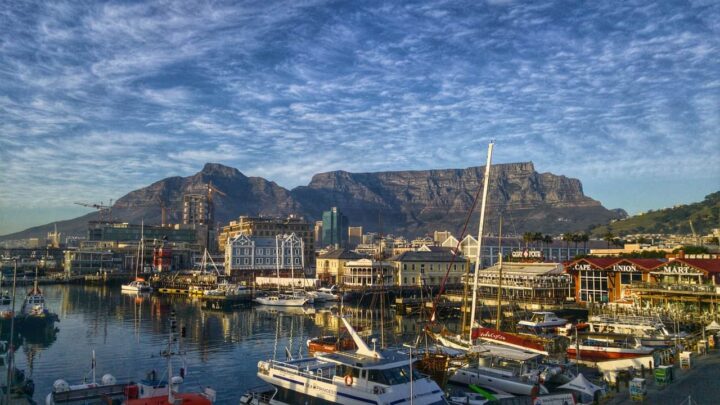Adventure Activities in Cape Town, South Africa
The following adventure Cape Town itinerary is authored by Campbell and Alya.
Cape Town is an amazing city for outdoor activities. Your Cape Town itinerary will be brimming with endless things to do! Located on the southern tip of the African continent between the sea and the mountains, Cape Town offers a great variety of adventure activities.
Cape Town has everything you can think of — hiking trails with stunning views to exciting water activities like surfing, kitesurfing, and kayaking. You can even dive around the Cape Peninsula, do some whale watching in Hermanus, and snorkel with seals in Hout Bay.
Whatever you decide to do in Cape Town, you’re bound to have an adventurous and amazing time in this beautiful city!
Adventure Activities in Cape Town
Table Mountain
Table Mountain is the most recognizable attraction and a must-visit place in Cape Town. The views from the top of Table Mountain are truly spectacular and well worth the effort.
Most tourists get to the top with a cable car which is the easiest and fastest way. There are several walking trails that take hikers to the top while offering amazing views along the way.
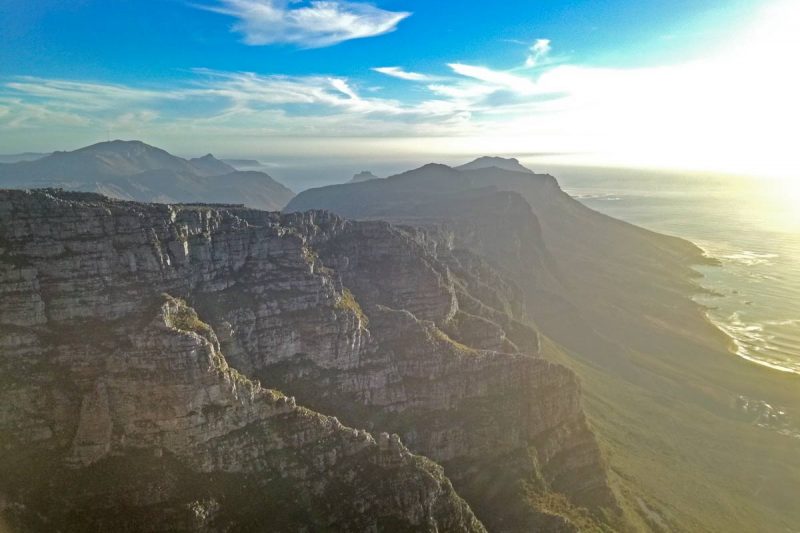
The three most popular routes are the Platteklip Gorge, the Indian Venster, and the Suicide Gorge. For safety reasons, it’s recommended to use one of these trails to walk up Table Mountain.
All trails are quite challenging. You can walk up and take the cable car down or the other way around. It’s recommended to walk in the morning before it gets too hot. Make sure to take enough water, wear a cap, and put on sunscreen.
The Platteklip Gorge Trail
This is the most popular route up to Table Mountain. On the weekends, many Capetonians do trail running here. The Cable Way Charity challenge takes place here every year. Participants have 12 hours from 6 am to 6 pm to complete a challenging 3.1-mile circuit from the Lower Cable Car station up the Platteklip Gorge Trail to the Upper Cable Car station and down by the cable car as many times as they can.
- Starting Point: 3.1 miles past the Lower Cable Car station
- Distance: 1.6 miles, one way
- Difficulty Level: 4 out of 5
- Time: Between an hour and fifteen minutes to an hour and a half
The India Venster Trail
This trail starts next to the Lower Cable Car station. It’s a bit more of a technical route than the Platteklip Gorget Trail and involves basic bouldering and a little bit of rock climbing. It doesn’t require any special gear or skills though.
- Starting Point: The Lower Cable car station
- Distance: 1.8 miles, one way
- Difficulty Level: 4 out of 5
- Time: Between 1.5 hours and 2 hours
The Skeleton Gorge Trail
The scenery on this route is quite different from the other two. It takes hikers through the lush forest with many small waterfalls, massive boulders covered in moss and evergreen trees. Keep in mind that if you take the cable car, you’ll get down on the other side of the mountain rather than the Kirstenbosch Garden. It’s important to remember if you park your car there.
- Starting Point: Kirstenbosch Botanical Garden
- Distance: 2.9 miles, one way
- Difficulty Level: 5 out of 5
- Time: Between 2.5 hours and 3 hours.
Lion’s Head
Another iconic mountain in Cape Town is Lion’s Head. You should definitely add watching the sunset from the top after hiking up Lion’s Head to your Cape Town itinerary.
Hiking is the only way of getting to the top of Lion’s Head. It’s not as high as Table Mountain but the last part involves climbing ladders and using ropes. It’s not that difficult. Just make sure to wear a suitable outfit and comfortable shoes.
- Starting point: Lion’s Head parking
- Distance: 3.5 miles, return
- Difficulty level: 3 out of 5
- Time: Between 1 hour and 1.5 hours
Lion’s Head and Signal Hill are popular spots for paragliding in Cape Town. It can be done at any time of the day but paragliding over the city with the landing on the beach during sunset is really special.
RELATED: A Two-Week Itinerary for South Africa – a First Timer’s View
Cape Point National Park
The Cape Point National Park is an amazing place with some of the best views in the city. It’s a must-visit place on your Cape Town itinerary.
The scenery at Cape Point is spectacular with unspoiled white-sand beaches, rugged cliffs, dramatic drops, rocky pools, and beautiful fynbos vegetation.
Cape Point is also a great place for observing wildlife. Tourists can see mongooses, baboons, porcupines, zebras, ostriches, tortoises, chameleons, etc. There are many short hiking trails that take visitors to the most spectacular parts of the park and one 2-day trekking route as well.
The Cape Point Hike
This hike involves an incredible 2-day trek around the Cape Point with an overnight stay in forest huts. On the first day, the trail goes through the fynbos along the sandy beaches. The second day is more challenging. The route takes hikers over the cliffs with several steep ascents and descents.
- Starting/Finishing Point: The park entrance gate (it’s a circuit route)
- Distance – 21 miles
- Difficulty Level – 4 out of 5
- Time – 2 full days
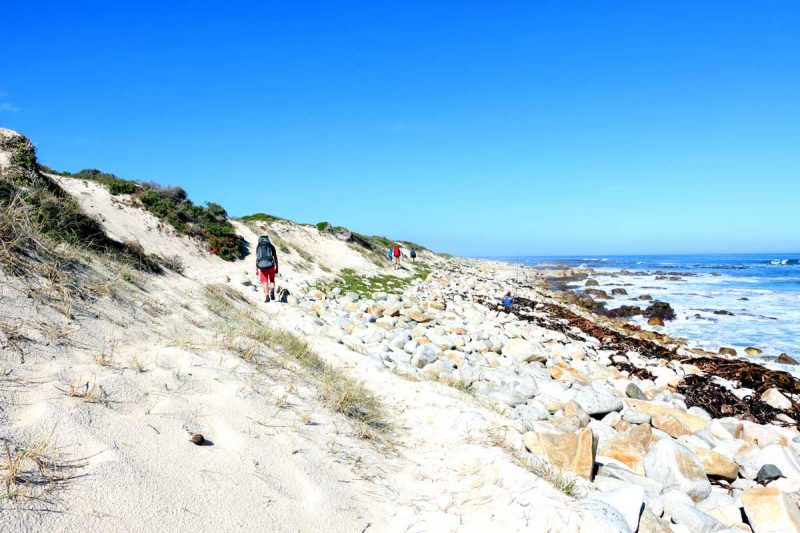
Most of the short hiking trails to the main park attractions start at the parking lot at the Upper Funicular Station. Don’t miss the walking routes to the Cape of Good Hope, Diaz Beach, and the Lighthouse at the Cape Point.
Jonkershoek Nature Reserve
This beautiful reserve is located near Stellenbosch which is 37 miles from Cape Town. The scenery in Jonkershoek is spectacular: breathtaking look-outs, hidden waterfalls, lush green mountains, and deep ravines. If you enjoy hiking, the Jonkershoek trails are worth including in your Cape Town itinerary. There are several hiking trails consisting of different lengths and difficulty levels.
The Panorama Hike
This is the longest and the most challenging trail in the reserve with the best panoramic views of the mountain range. It’s highly recommended to start hiking early in the morning so you have enough time to complete the route.
- Starting/Finishing Point: The parking lot at the end of the gravel road inside the reserve
- Distance: 10.5 miles, loop
- Difficulty Level: 5 out of 5, a steep ascent in the beginning and a very steep and rocky descent at the end of the route
- Time: 5 to 6 hours
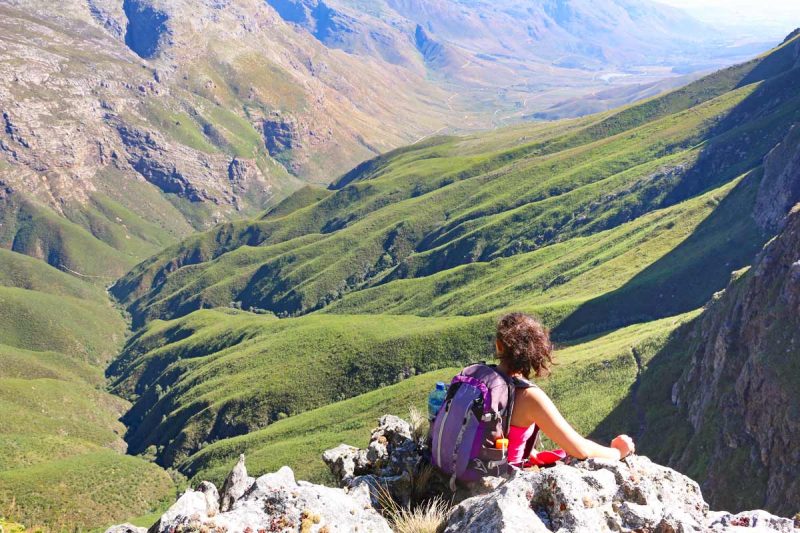
Some parts of the trail are rocky so it’s highly recommended to wear hiking shoes or trail runners. Bring water and snacks with you on the hike too.
Unlock FREE Flights and Hotels!
Credit cards aren’t just for spending—they’re your ticket to epic travel rewards!
By using the right card for your everyday purchases, you could earn points for free flights, hotel stays, and more. No tricks, just smarter travel. Ready to see how?
The Swartboskloof Trail
This is another long and challenging route in the Jonkershoek Reserve with some stunning views of the Cape Peninsula, Table Mountain, and the Cape Winelands.
- Starting/Finishing Point: The parking lot inside the reserve
- Distance: 11 miles, return
- Difficulty Level: 5 out of 5, a steep ascent at the beginning
- Time – 5 to 6 hours
The shorter hiking trails such as Tweede Waterfall (3.7 miles) and the Swartboskloof Trail (3 miles) are great easy alternatives suitable for travelers with children. Both trails have spectacular scenery with indigenous forests, small waterfalls, beautiful look-out points.
The Suicide Gorge Kloofing for the Adventurous Cape Town Itinerary
The Suicide Gorge is the ultimate place for adrenaline junkies! It’s not your ordinary hike. It’s a thrilling adventure not for the faint heart. The trail is located near Elgin, about an hour’s drive from Cape Point.
- Starting/Finishing Point: The park entrance office
- Distance: 10.5 miles loop
- Difficulty Level: 5 out of 5
- Time: 8-9 hours
The trail through the Cape Nature Reserve takes adventure seekers through the beautiful mountains with hidden rocky pools deep enough for jumping from 26 feet to 46 feet.
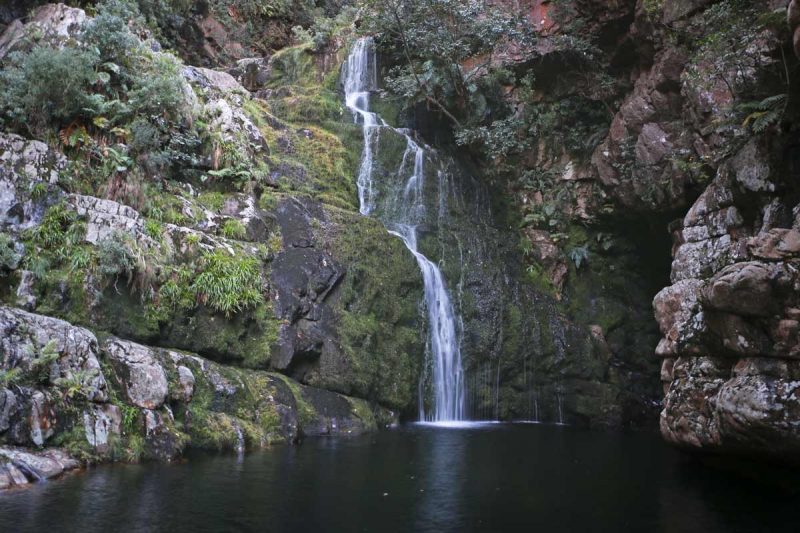
This Suicide Gorge Kloofing Trail is for experienced and fit hikers who have no fear of heights. Once you jump off the first cliff, there is no way back. The highest jump is 46 feet!
The trail involves a lot of swimming, waterfall sliding, and jumping in the middle section. You’ll need a dry bag to keep your stuff out of the water. To have enough time to complete the trail and to enjoy the pools, it’s recommended to start before 9 am. For inexperienced hikers who have never done kloofing before, it’s compulsory to hike with a guide.
The Best Places in Cape Town for Mountain Biking
There are several excellent mountain biking trails around the city of different difficulty levels suitable for experienced cyclists and beginners. Table Mountain is the most popular MTB spot within Cape Town. The total distance of the route is 17 miles with some technical parts to tackle for confident bikers. There are several strenuous ascents at the beginning of the route and a steep rocky descent in the middle section.
The Constantia Valley has two MTB trails more suitable for beginners. A 6.2-mile and a 16-mile trail through the green Constantia hills are great routes for an easy ride. Both trails end at Constantia Uitsig Wine Estate so cyclists can enjoy wine tasting and lunch after completing the trails.
Jonkershoek Nature Reserve is another popular place for mountain biking. There are several MTB trails from easy and relatively flat 6.2-mile loops to more challenging 24.5 mile trails with strenuous ascents to look-out points with rewarding views of the Cape Peninsula.
If you don’t have your own bike, it’s possible to rent a fully-equipped off-road bike in Cape Town or Stellenbosch.
Amazing Road Cycling Routes Around Cape Town
Cycling around the Cape Peninsula following Chapman’s Peak Drive is an amazing adventure. The scenery along the road is truly spectacular with dramatic drops, numerous capes, sandy beaches, rocky cliffs, and rugged mountains. The road has many curves so it’s important to watch for cars when cycling here.
Clarence Drive (the R44) from Gordons Bay is another incredible road that’s popular for cyclists. It starts at Gordon’s Bay and follows the coast for 53 miles all the way to Hermanus. There are many beautiful places and fantastic look-out points along the way.
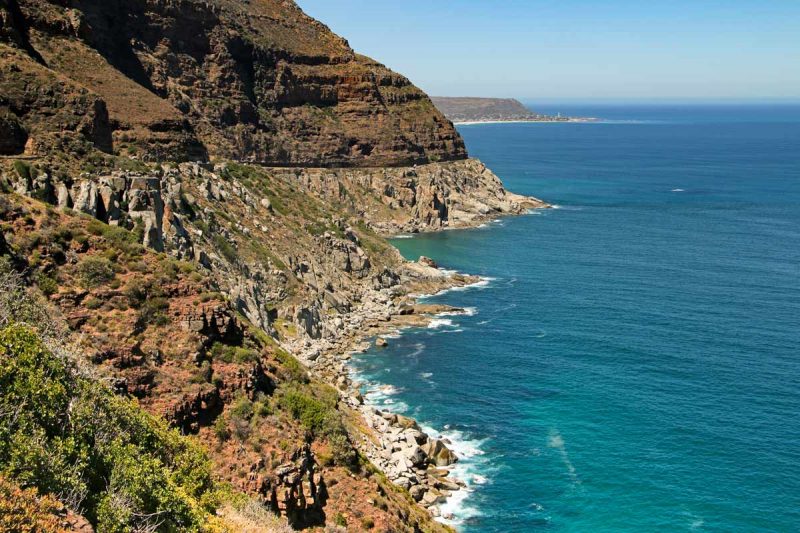
In the peak season between July and September, you have pretty good chances spotting Southern right whales from the shore. Seals and penguins can be seen in the area all year round. There is a bike rental place in Gordon’s Bay so you can drive here from Cape Town, park your car, and continue on a bicycle.
If you’re not very comfortable with cycling on a winding road with cars, you can rent a bike and enjoy a relaxing ride along the Promenade at Green Point in Cape Town. It’s a long stretch of wide sidewalk that starts at Sea Point swimming pool and finishes at the V&A Waterfront. There are no cars to watch for — just the beautiful sea scenery and nice beaches. This light adventure activity is suitable for travelers with children.
Places for Scuba Diving in Cape Town
Cape Town is not very well known for scuba diving. When it comes to marine life in the area, most people know about viewing Great White sharks from a cage and whale watching. The southern tip of Africa where currents from different sides of the African continent meet does, however, offer excellent scuba diving with great biodiversity and several dive operators.
Diving around Cape Town can be challenging with cold water and poor visibility at times. The temperature issue is easily resolved by diving in a proper wetsuit or drysuit if you get cold easily. If you dive during the right season, visibility can be very good up to 66 feet.
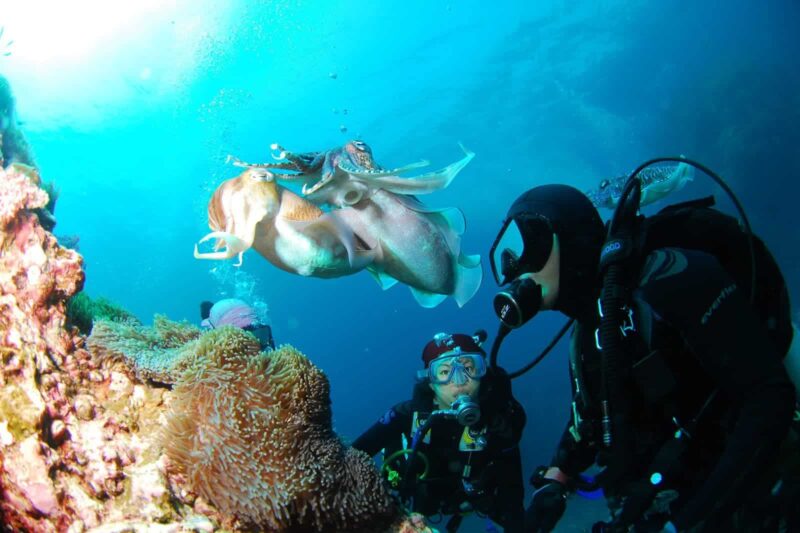
Wintertime is the best time of the year to dive inside False Bay from Simonstown. The Atlantic Side, referring to the west coast of the Cape Peninsula, has clear water that is good for diving in the summer.
Diving in the kelp forests of Cape Town is a unique experience with amazing marine life. Cape Town has many different types of colorful nudibranchs and taking photos of these beautiful sea slugs is popular.
The Cape is home to many fish species such as Galjoen, Cape KnifeJaw, Red Roman, Bank Steenbras, and Janbruin. There are a variety of sharks that can be seen, but you really have to go and look for them.
Seven Gill Cow sharks can be seen around Shark Alley in Simonstown on boat dives or diving from the shore. Blue sharks and Mako sharks can be seen on pelagic dives in the warm Agulhas current, a long drive by boat from Cape Town. Great White sharks are very rarely seen by scuba divers.
The Best Surfing Spots for the Ultimate Cape Town Adventure Itinerary
Winter months, June to August, with almost no wind and the steady swell is the best time for surfing in Cape Town. The water around the Cape Peninsula is always cold, between 50°F and 50°F. A wetsuit and booties are a must-have for surfing here.
Muizenberg, Big Bay, and Kommetjie are three good spots for surfing within the city. Muizenberg and Big Bay cater more for foreigners as both have a couple of surfing schools and board rental places while Kommetjie is more of a local spot.
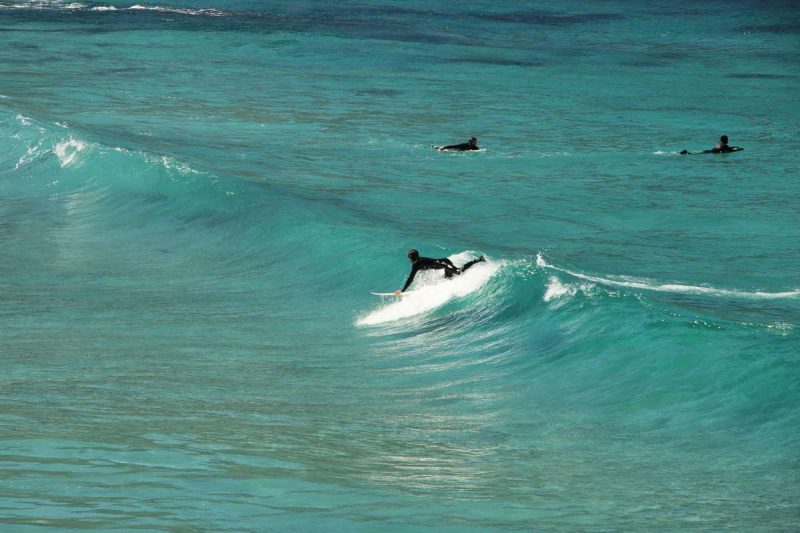
Muizenberg is the most popular surf spot in Cape Town. Many people come here to learn surfing. There are several schools that offer packages that include surf lessons, gear rental, and accommodation. It’s a great way to learn surfing and meet other travelers.
Big Bay is another great spot for learning. Like in Muizenberg, there are a couple of surf schools located right at the beach. If you stay on the beach, you don’t even need a car to get from your hotel to a surf spot, you can just walk there with a surfboard.
Surfers with more experience often go surfing near Melkbosstrand (Derde Steen) or Elands Bay. There are usually fewer people than in Muizenberg or Big Bay and waves tend to get a bit bigger there.
Snorkeling With Seals in Hout Bay
Cape Fur seals can be seen in many places around the Cape peninsula including popular touristy spots such as the V&A Waterfront and Cape Point National Park.
Hout Bay is one of the most popular places to go snorkeling with seals. You can always see a couple of seals at the harbor but being in the water with these playful animals is an absolutely amazing experience.
Tours leave from Hout Bay harbor and take snorkelers to Duiker Island, a small island occupied by hundreds of Cape seals. These guys are very curious and playful animals.
Once they see people in the water, they immediately approach them. For about 30 minutes, you’re surrounded by these graceful animals swimming around and playing with each other. Tours are suitable for children older than 6 years. The only requirement is that snorkelers have to be able to swim (life jackets are provided).
Where to Go Kitesurfing in Cape Town
Summer is the best time for kitesurfing in Cape Town. The Southeast wind blows non-stop from December to February turning the city into a kitesurfing mecca.
Blouberg Beach is the best place for kitesurfing in Cape Town. A long sandy beach protected with sand dunes from the road is a perfect spot for experienced kiters. It’s possible to learn here as well but the wind often is too strong to manage for beginners. Every year in February the King of Air, an international kitesurfing festival takes place at Blouberg Beach.
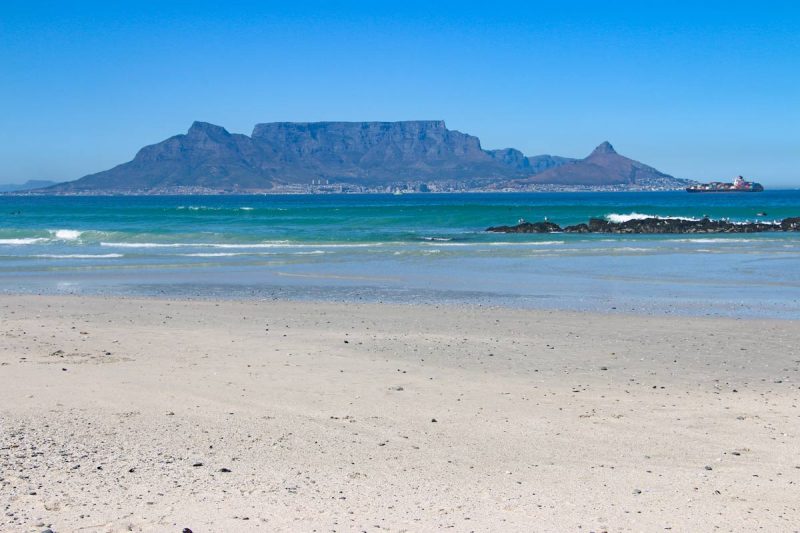
Langebaan is a small town on the West Coast, 130 km from Cape Town is the best place to learn to kitesurf. The town is situated on a Lagoon surrounded by sandy beaches. The water in the lagoon is usually flat which makes it easy to kitesurf here if you’re a beginner. Langebaan is a chilled beach town, a perfect place to combine a beach holiday with learning kitesurfing.
Sea Kayaking
Kayaking is a great way to spend a day out in the sea and to observe the diverse marine life of the Cape Peninsula. V&A Waterfront is a popular place for sea kayaking in Cape Town.
You can rent a kayak here or join a tour which is recommended for inexperienced kayakers. During the trip, you can see different seabirds, Cape Fur seals, dolphins, and even whales (if you’re very lucky). A bonus of kayaking at the Waterfront are stunning views of Table Mountain, Lion’s Head, and the seafront.
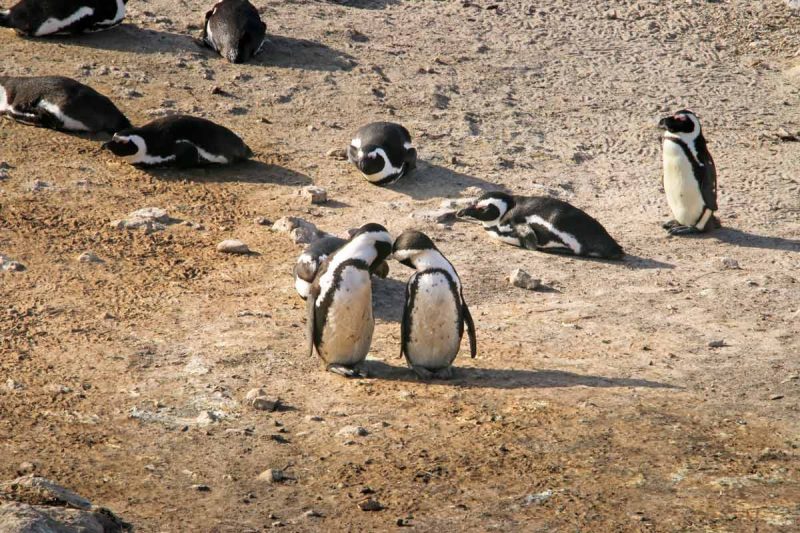
Simons Town is another great place for kayaking there you can see many African penguins that inhabit Boulders Beach, a small white-sand beach surrounded by huge boulders.
Best Time to Visit Cape Town
November to March, during the summer, is the best time in the city. It’s warm and sunny every day with very little rain. Summer is a great time for hiking, kitesurfing, kayaking, mountain biking. Winter months between June and August are very rainy and chilly in the Cape. It’s not too great for hiking but surfing and diving are much better in winter.
Where To Stay in Cape Town
City Bowl, V&A Waterfront and Green Point are the best areas to stay in Cape Town. They’re located close to the main city attractions, public transport, bars, and restaurants.
- Budget accommodation | Never@home Cape Town | Atlantic Point Backpackers | A Sunflower Stop Backpackers
- Middle price | Braeside B&B | Cape Nelson Guesthouse | Harbour Bridge Luxury Apartment
- High end | Victoria & Albert Hotel | Dysart Boutique Hotel | The Commodore Hotel
More Around South Africa
What are you most excited to do on your adventure Cape Town itinerary? Let us know in the comments below!
>>> Bio
Campbell & Alya are the adventurous travel couple behind Stingy Nomads. Every summer they spend 3-4 months in Cape Town doing various outdoor activities such as hiking, diving, camping, and surfing. The rest of the year, Stingy Nomads spend exploring the world’s best hiking and diving locations.
